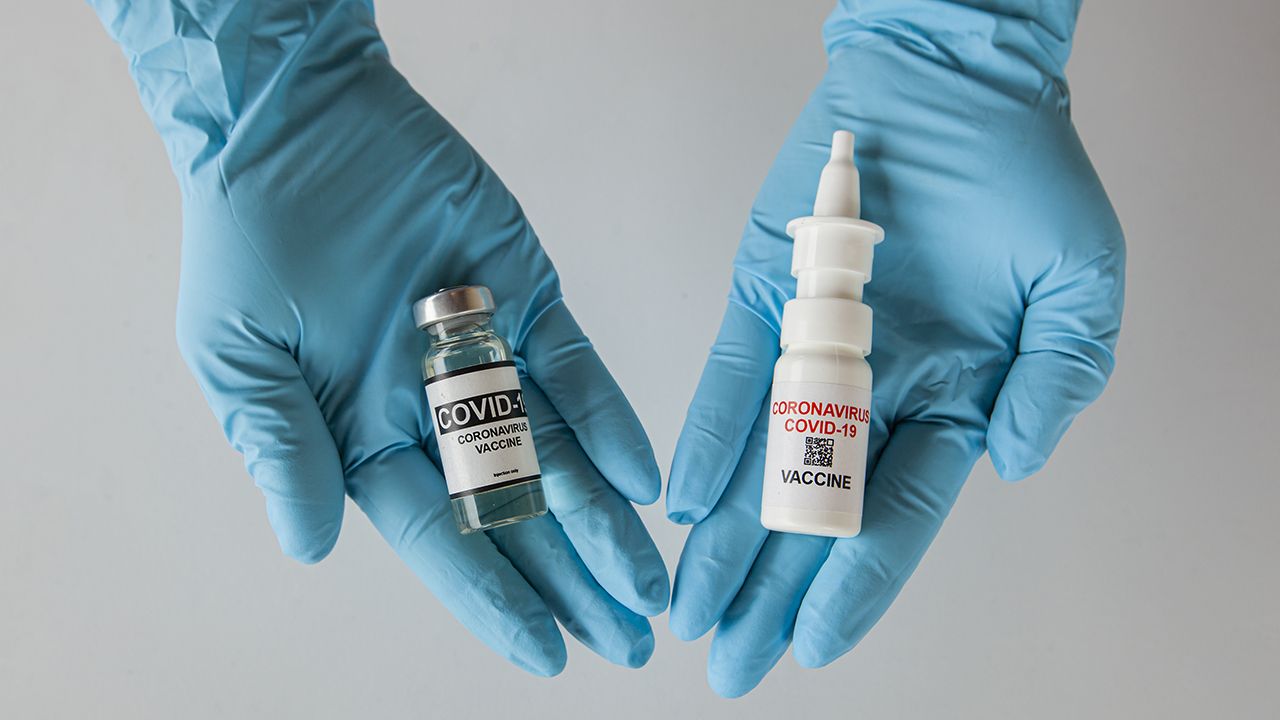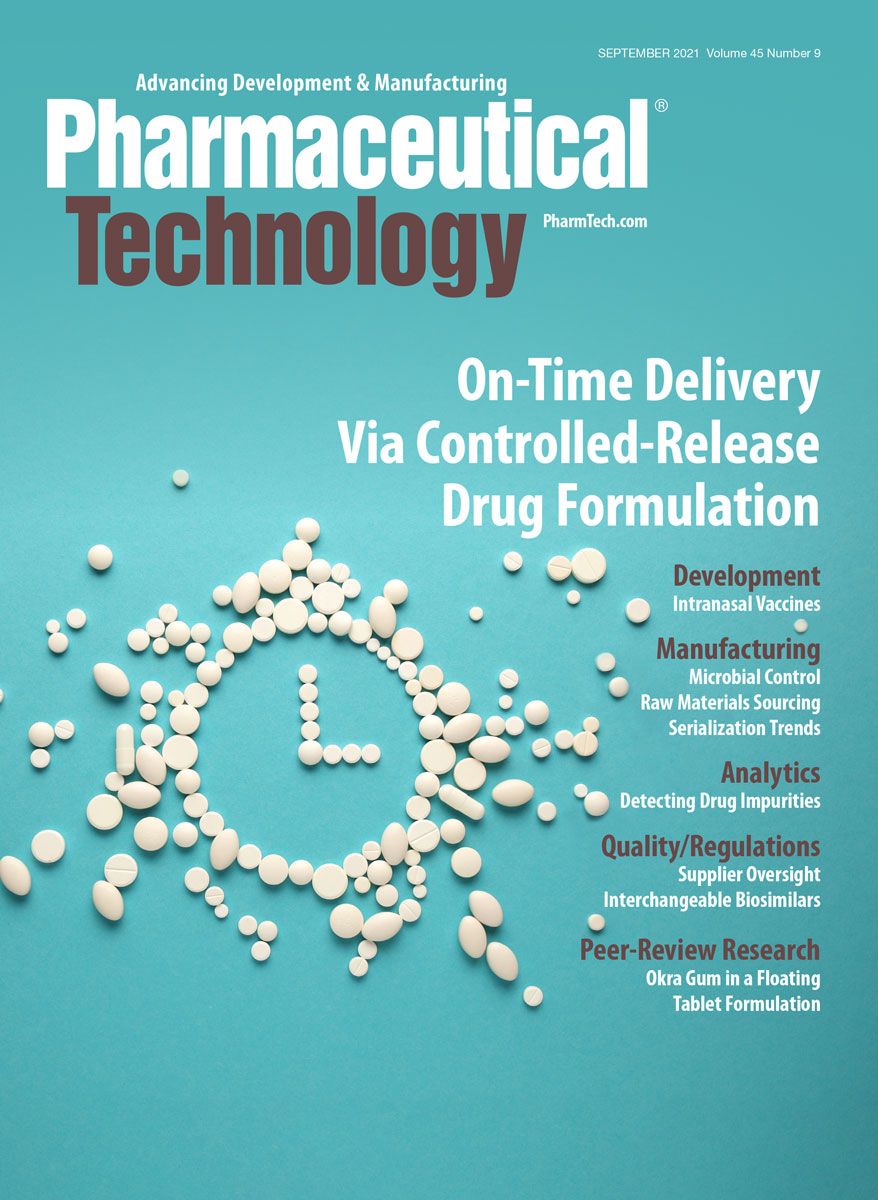Getting a Nose for Vaccines
The intranasal route of administration is showing clinical promise, particularly for COVID-19, but there are multiple hurdles to overcome to ensure successful formulation.
SKYLINE - STOCK.ADOBE.COM

The SARS-CoV-2 outbreak, which started late in 2019, has demonstrated how devastating novel infections can be for the global population. In response to the infectious threat posed by the novel coronavirus, the pharmaceutical industry rallied and managed to develop effective parenteral vaccines in record breaking speeds. However, the COVID-19 pandemic has also brought to the fore the development and distribution challenges associated with mass vaccination programs as well as difficulties ensuring equitable access to vaccines—a particular challenge for low-income countries.
Rationale behind a mucosal route
Mucosal pathogens, such as SARS-CoV-2, are a major cause of infectious diseases across the world, and the mucosal route of vaccination has been of interest for some time, primarily due to the induction of immune response that is achievable with this form of delivery (1).
Although there are numerous avenues available for mucosal vaccination, the most commonly employed routes are via the mouth and nose. However, the number of licensed mucosal vaccine formulations is limited, and the available formulations tend to use attenuated strains of pathogenic bacteria or viruses, which carry specific risks such as reactogenicity and post-vaccination reversion of the pathogen to a virulent form (1).
Nevertheless, mucosal vaccines provide a strong immune response in patients, both in mucosal sites and systemic circulation (2). Additionally, these types of vaccines also offer cost and administration benefits over the traditional injectable forms (2).
Formulations for intranasal vaccines
Nasally administered vaccines are widely accepted and easily accessible, and have reportedly achieved a better systemic bioavailability and protection from gastric enzymes when compared with orally or parenterally administered vaccines (3). Yet, there are multiple hurdles that can hamper development of nasal vaccines.
Challenges to the formulation of nasal vaccines include, but are not limited to, the size of the dose required, limited efficacy of the vaccine due to mucociliary clearance, the necessity for adjuvants to enhance immunogenicity, restricted delivery volume in the nasal cavity, and normal human defense mechanisms (3). According to expert opinion, the incorporation of effective adjuvants that can trigger both mucosal and systemic immune responses are necessary for noninvasive vaccine delivery, and a more extensive understanding of mucosal immunity is required (4).
Currently, the commercially available intranasal vaccines are FluMist/Fluenz Tetra (AstraZeneca) and Nasovac (Serum Institute of India), which are both liquid, live-attenuated vaccines for influenza administered via a nasal spray (5). Other formulations for nasal vaccines include solutions administered via drops, powders, gels, and solid inserts, although there are no other nasally administered vaccines approved for marketing authorization globally.
Spraying a solution into the nasal cavity is simple for administration purposes; however, some of the formulation may leak from the nasal cavity or into the oral cavity, which would reduce potential therapeutic effect and dose. To overcome these potential issues, it has been suggested by some experts that gelling agents, such as polymers, included in the formulation could increase the residence time of the vaccine in the nasal passage (5).
Solid formats for nasal vaccines can offer the advantage of being more stable than liquid formulations but may have disadvantages in terms of cost and ease of administration due to the potential requirement of specialist applicators. Additionally, there has been interest in the development of particulate carrier systems, such as liposomes, for vaccine products (5). To achieve success, however, vaccine formulations that are designed for intranasal administration must maintain the antigen stability, provide sufficient residence time in the nasal mucosa, and should be compatible with other components, such as adjuvants (6).
Clinical prospects for COVID-19
For COVID-19, it has been specified that the intranasal route of administration for a vaccine is promising due to the fact that the normal route of infection for the SARS-CoV-2 virus is also via the nose (6). Furthermore, it is widely reported that vaccines administered intramuscularly are less likely to provide immunity protection in the upper respiratory tract—the area of primary attack from SARS-CoV-2.
At the time of writing, the World Health Organization (WHO) has reported that there are 112 vaccines in clinical development and 184 in pre-clinical development for COVID-19 (7). Of those candidates in clinical phase, only eight vaccines are formulated for intranasal administration (7).
The furthest along the clinical lifecycle, according to WHO, are a viral vector (replicating) vaccine being developed by the University of Hong Kong, Xiamen University, and Beijing Wantai Biological Pharmacy, and a protein subunit vaccine being developed by the Center for Genetic Engineering and Biotechnology (7). Another potential intranasal candidate from Altimmune is no longer in development as a result of inadequate immune response in healthy volunteers (8).
Of the vaccines that currently have authorization from regulatory bodies to treat COVID-19, only one is in clinical development as an intranasal formulation (7). The University of Oxford announced the launch of a study investigating the efficacy of nasal administration of the ChAdOx1 nCoV-19 vaccine, which was originally co-developed for intramuscular administration with AstraZeneca, earlier in 2021 (9). The trial will assess the efficacy and immune response of either one dose or two doses of the intranasal vaccine in healthy participants and is expected to take four months (10).
Regarding the other potential intranasal COVID-19 vaccines in clinical development: two are live attenuated virus vaccines—COVI-VAC from Codagenix and Serum Institute of India, and MV-014-212 from Meissa Vaccines; two are non-replicating viral vector vaccines—BBV154 from Bharat Biotech International and PIV5-vectored vaccine from CyanVac; and one is an inactivated virus for intramuscular or intranasal administration from Laboratorio Avi-Mex. There is an additional protein subunit vaccine listed in WHO’s COVID‑19 vaccine candidate tracker, which is administered intramuscularly for the first two doses and then intranasally for a third dose, from Razi Vaccine and Serum Research Institute (7).
Another potential intranasal candidate that is currently in the pre-clinical stage is a vaccine that uses a common poultry virus, the Newcastle Disease Virus, to produce spike proteins of SARS-CoV-2 (11). The collaborative effort from the University of Lancaster (United Kingdom) and the Texas Biomedical Research Institute has garnered positive results with reductions in both disease impact and transmission in animals (12).
Rokote Laboratories Finland—an academic spin-out company from the University of Eastern Finland and the University of Helsinki—has secured funding that will help it push forward with clinical development of its intranasal COVID-19 vaccine candidate, FINCoVac (13). The vaccine is based on gene transfer technology that has proven successful in other fields.
A further intranasal candidate is in development by Dutch company Intravacc (14). The SARS-CoV-2 Outer Membrane Vesicle based recombinant spike protein candidate has delivered positive pre-clinical results in mice and hamsters, and the company hopes to move forward to in-human trials quickly. And, researchers from TheraVectys—a spin-out from Institut Pasteur—have been developing a lentiviral vector vaccine candidate, which it reports would represent “a second generation vaccine that could generate a durable cellular response against the original SARS-CoV-2 strain, existing, and future variants” (15).
References
1. A. Miguel-Clopés, et al., Clin. Exp. Immunol., 196 (2) 205–214 (2019).
2. R. Mudgal, S. Nehul, and S. Tomar, Hum. Vaccines Immunother., 16 (12) 2921–2931 (2020).
3. M. Ramvikas, et al., “Nasal Vaccine Delivery” in Micro and Nanotechnology in Vaccine Development, M. Skwarczynski and I. Toth, Eds., pp. 279–301 (Elsevier, Amsterdam, The Netherlands, 1st ed., 2016).
4. M. Skwarczynski and I. Toth, Expert Opin. Drug Deliv., 17 (4) 435–547 (2020).
5. H. Yusuf and V. Kett, Hum. Vaccines Immunother., 13 (1) 24–45 (2017).
6. V.P. Chavda, et al., Drug Discov. Today, In Press, Corrected Proof, doi.org/10.1016/j.drudis.2021.07.021 (July 29, 2021).
7. WHO, COVID-19—Landscape of Novel Coronavirus Candidate Vaccine Development Worldwide [Accessed Aug. 24, 2021].
8. Altimmune, “Altimmune Announces Update on AdCOVID Phase I Clinical Trial,” Press Release, June 29, 2021.
9. University of Oxford, “University of Oxford to Study Nasal Administration of COVID-19 Vaccine,” Press Release, March 25, 2021.
10. The Jenner Institute, “COVID-19 Vaccine Intranasal Study (COV008),” Trial Information, jenner.ac.uk [Accessed Aug. 24, 2021].
11. Lancaster University, “Lancaster University Intranasal Vaccine Offers Promise to Block COVID-19 Where it Starts,” Press Release, Aug. 10, 2021.
12. J.-G. Park, et al., iScience, 24 (9) 102941 (2021).
13. University of Eastern Finland, “Finnish Coronavirus Vaccine Developer Rokote Laboratories Finland Secures Significant Funding,” Press Release, July 7, 2021.
14. Intravacc, “Intravacc Announces Positive Pre-Clinical Data for its SARS-CoV-2 Nose Spray Vaccine,” Press Release, April 7, 2021.
15. TheraVectys, “Lenti-Covid: Robust Answer Addressing Long-Term Immunity and Emerging Variants,” Press Release, May 30, 2021.
About the Author
Felicity Thomas is the European editor for Pharmaceutical Technology Group.
Article Details
Pharmaceutical Technology
Vol. 45, No. 9
September 2021
Pages: 26–28
Citation
When referring to this article, please cite it as F. Thomas, “Getting a Nose for Vaccines,” Pharmaceutical Technology 45 (9) 2021.

Drug Solutions Podcast: A Closer Look at mRNA in Oncology and Vaccines
April 30th 2024In this episode fo the Drug Solutions Podcast, etherna’s vice-president of Technology and Innovation, Stefaan De Koker, discusses the merits and challenges of using mRNA as the foundation for therapeutics in oncology as well as for vaccines.
Drug Solutions Podcast: Applying Appropriate Analytics to Drug Development
March 26th 2024In this episode of the Drug Solutions Podcast, Jan Bekker, Vice President of Business Development, Commercial and Technical Operations at BioCina, discusses the latest analytical tools and their applications in the drug development market.
PacBio Chosen as Tech Partner for Global Alzheimer’s Disease Research Project
April 23rd 2025The project, the North African Dementia Registry, will unite multiple entities for the purpose of developing a comprehensive dataset to advance the research community’s understanding of Alzheimer’s disease and other dementias in diverse populations.